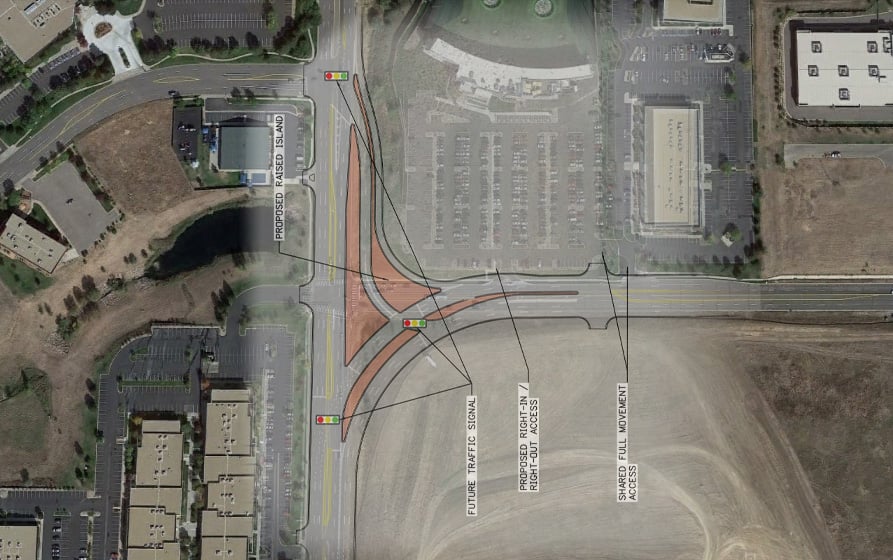Is your city growing faster than roads can sustain? Do you have a busy intersection that gets congested due to drivers needing to make left turns? The continuous flow intersection may be the solution to your traffic challenges.
Often, when an area grows faster than local roadways can support, intersections get backed up with drivers making left turns, filling up the turn lane and spilling out into through traffic. Drivers turning left have to wait for oncoming traffic, while the drivers behind the queue of turning vehicles have to wait before being able to pass through the intersection. This frequently happens around shopping center developments and businesses. In busy areas, it can create long backups and driver frustration.
Solution: The continuous flow intersection design
The continuous flow intersection (CFI), also called a cross-over displaced left-turn intersection, is a unique, efficient design that can eliminate congestion caused by drivers making left turns.
The CFI design allows left-turning drivers to start their turn at a signal controlled intersection several hundred feet before the intersection. This allows left-turn movements to proceed simultaneously with the through traffic. Drivers wanting to continue forward can stay in motion instead of being stuck behind someone who can’t get through an intersection.
With this type of interchange, a single traffic signal that normally alternates between eight different movements at the intersection is replaced by three signals that only control two separate movements at each signal. There is the potential to stop three times: once at a midblock signal as you approach the intersection, once at the intersection and once at a midblock signal after leaving the intersection. However, with careful signal coordination, traffic can keep flowing much more efficiently, safely and smoothly without the potential stops.
The reason congestion was growing at the Havana Street/Easter Avenue intersection in Centennial is twofold. First, the adjacent, undeveloped land was filling up with commercial and office developments. Second, the major parallel roadway in the vicinity was over capacity, and vehicles were diverting their routes through the intersection.
SEH performed a traffic study to gain precise understanding, then developed several different intersection design options for the City to consider.
Recognizing the benefits, Centennial ultimately settled on the CFI design to help alleviate congestion and keep traffic flowing smoothly. The City hopes to move forward with this project in the near future.

The SEH team's CFI design would include modifying the previous four-way intersection into a three-way intersection, which would improve safety and significantly cut down on congestion throughout the area.
About the Author

Mike Perez, PE (CO), is an SEH principal, senior professional engineer and leads SEH’s traffic and highway design practice in Colorado and Wyoming. In addition to regularly developing final roadway plans, specifications and estimates (PS&E) for various project owners, his strengths and areas of expertise include project management, resource management, business development and marketing.

.png?width=113&name=SEH_Logo_RGB%20(1).png)
